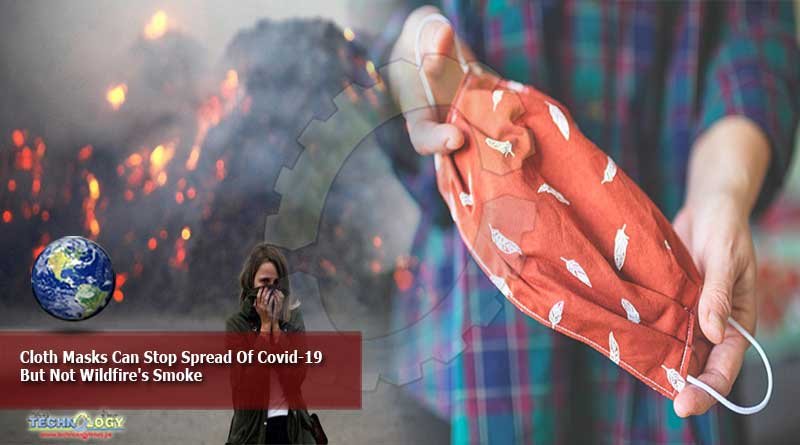Cloth and surgical masks are designed to prevent the spread of the coronavirus but will do nothing to protect you from wildfire smoke.

The Associated Press checks out some of the most popular but completely untrue stories and visuals of the week. This one is bogus, even though it was shared widely on social media. Here are the facts:
CLAIM: CDC warns that non-N95 masks will do nothing to protect you from wildfire smoke because “they do not catch small particles.” Smoke particles are larger than those of SARS-CoV-2, the virus that causes COVID-19, so masks do not work.
THE FACTS: Cloth and surgical masks are designed to prevent the spread of the coronavirus by catching respiratory droplets coming from the person wearing the mask. Respiratory droplets are larger than smoke particles.
Social media posts are misrepresenting information from the U.S. Centers for Disease Control and Prevention regarding masks and wildfires to claim that masks do not work.
The CDC recently updated its guidance on wildfires to include information about the coronavirus. On the page titled “Wildfire Smoke and COVID-19,” the agency said that cloth masks would not protect anyone from wildfire smoke.
“Cloth masks that are used to slow the spread of COVID-19 by blocking respiratory droplets offer little protection against wildfire smoke. They do not catch small, harmful particles in smoke that can harm your health,” the agency said.
Online posts are using that information to say that if smoke particles are larger than those of the coronavirus, then how could masks be effective in stopping COVID-19.
“Mask won’t prevent smoke inhalation. But keep thinking they are protecting you from a virus,” one post on Facebook said. The posts were shared across Facebook and Twitter with one post on Twitter receiving more than 8,000 likes.
Such posts miss the point of wearing cloth or surgical masks.
“If the wearer has a respiratory droplet that has a virus, facial coverings keep that droplet from going out into the area around them which is why facial coverings are recommended when people are not social distancing,” said Dr. Albert Rizzo, chief medical officer for the American Lung Association. “It’s never been designed to protect the person wearing the mask.”
N95 masks are engineered to protect against inhaling very small particles about .3 microns in size and larger, making them effective against smoke and virus particles, said Dr. Jonathan Parsons, a pulmonologist at The Ohio State University Wexner Medical Center.
Wildfire particles are up to 2.5 microns. A coronavirus particle is about .125 microns in size.
“Cloth masks and surgical masks are not designed to protect you against particles that small so the smoke goes through,” Parsons said. “Respiratory droplets are much larger than the harmful materials in the wildfire smoke.”
Parsons recommends wearing cloth and surgical masks to curb the spread of COVID-19 in wildfire areas even if they do not protect against smoke particles.
The article is originally published at oregon live
